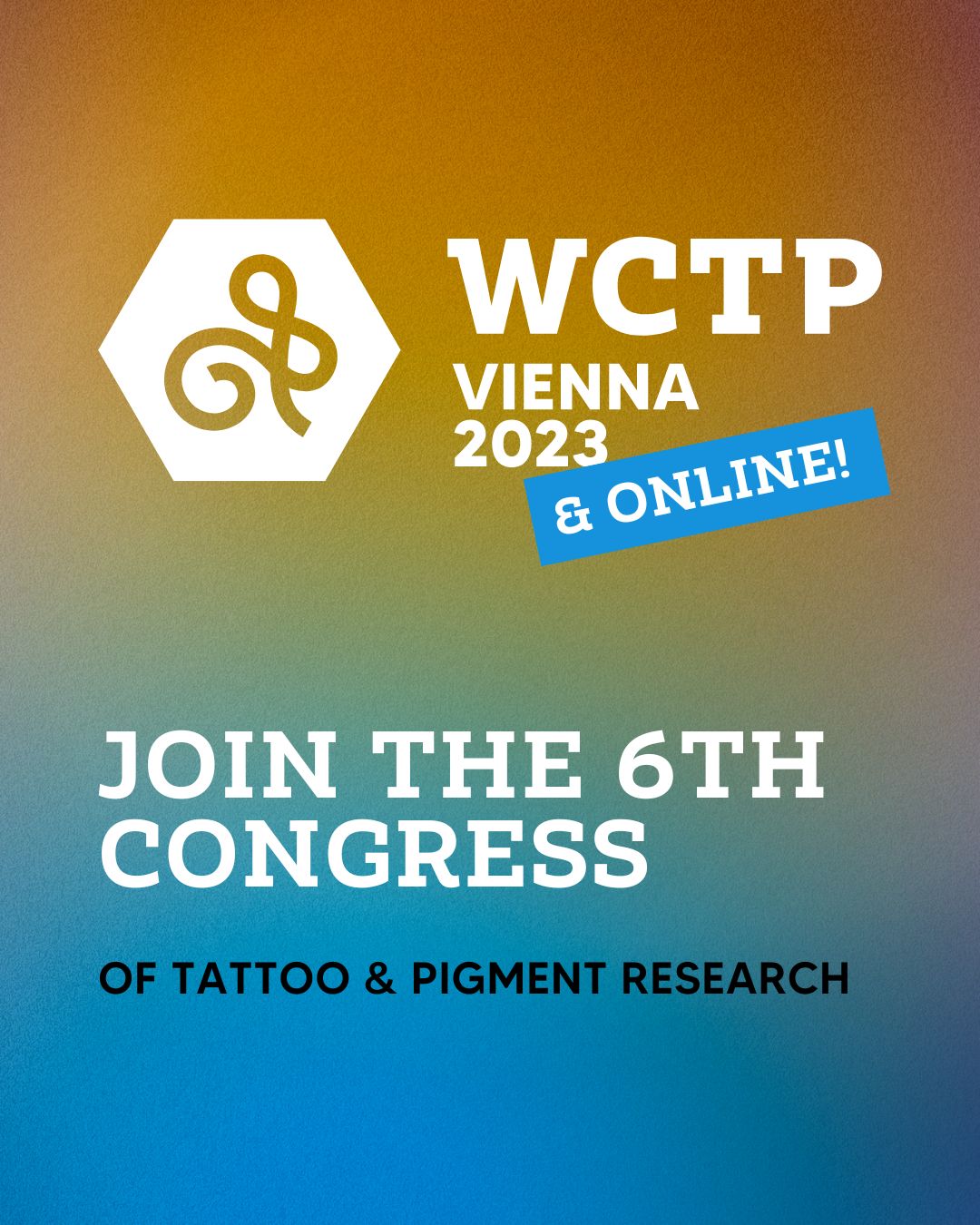
The 2nd International Conference on Tattoo Safety was organised in frame of the larger BfR event dedicated to Challenges in Public Health Protection in the 21st Century, which also covers the BfR-Symposium “New Methods, Omics and Novel Concepts in Toxicology – Current Application and future Directions” on 15 – 17 November 2021.
The 2nd International Conference on Tattoo Safety at the Berlin Museum of Natural History brought together experts in the fields of toxicology, legislation and manufacturing. The major aim is to communicate the inevitable requirements for a comprehensive evaluation of risks associated with the injection of tattoo inks into human skin.
With this article we would like to introduce some of the presentations that ESTP members and other speakers gave.
At the conference website you can find valuable links to the program, presentation slides and abstracts.

Dr. Sebastiaan van der Bent
Tattoo Clinic, Alrijne Hospital, Leiden
www.tattoopoli.nl
Sebastiaan van der Bent gave a presentation regarding an overview of tattoo complications. In his latest study, he reported 308 complications, with the majority of them being chronic: 91.9%. Allergic red tattoo reactions and chronic inflammatory black tattoo reactions (CIBTR) accounted for 50.2% and 18.2%, respectively, of all complications. Of these CIBTR reactions, extra-cutaneous involvement was found in 21.4%, including tattoo-associated uveitis (7.1%) and systemic sarcoidosis (14.2%).

Prof. Dr. Nicolas Kluger
Adjunct Professor / Maître de conferences, Dermatology and venereology
To date, the only skin cancer which seems to be associated with tattooing is the keratoacanthoma, which tends to occur more often on red tattoos and in mid aged individuals. No link has been established between inner organ cancers or lymphomas and tattoos. Studies on large populations are warranted.

Dr. Ines Schreiver
German Federal Institute for Risk Assessment – BfR
Gaining in vitro and human data on tattoo ink toxicology
To understand and predict toxic effects of tattoo ink ingredients, the development of new test methods and the closure of data gaps are inevitable. The established first tattooed skin model, TatS, which can be used for toxicity testing, and is currently refined by the incorporation of macrophages. Additionally, first data on bioavailability of soluble ink ingredients gained by a clinical study will help to provide a realistic exposure scenario for risk assessment in future.

Dr. Corinna Brungs
IOCB Prague – Institute of Organic Chemistry and Biochemistry of the Czech Academy of Sciences
WWU Münster
The identification of insoluble tattoo pigments remains a major analytical challenge and is of particular interest in tattooed skin with an adverse reaction. Therefore, this study investigated tattooed human skin samples by micro X-ray fluorescence (µXRF) and laser desorption/ionization-mass spectrometry (LDI-MS) for elemental and molecular imaging, respectively. The spatially resolved methods can provide additional information based on the localization of analytes of interest. The skin samples were obtained from patients with adverse tattoo reactions. Based on this workflow, Ti, Fe, Pigment Red (PR) 122, PR 170, PR 266, Pigment Blue 15, and Pigment Violet 19 were detected each in more than 28% of all samples.


Dr. Milena Förster
International Agency for Research on Cancer (IARC), Lyon
Presentation: The evolving topic of tattoos in cancer epidemiology and why studies should be prospective.
The potential long-term health effects of tattoos, amongst them skin and lymphatic cancers or immune-related diseases, are unknown. The talk explained why only prospective epidemiological approaches can answer this question and why other designs (retrospective case-control studies, case reports) are not suitable. The presentation gave an overview of basic epidemiological concepts, such as exposure, confounder, and outcome characteristics, and explained why and how the recent increase of tattoo prevalence needs to be considered when designing a study.

Veit Houben, CTL Bielefeld
Industry meets authority – Different perspectives, common goals The new regulation of Tattoo and PMU colours via REACH aims to restrict harmful substances. The prerequisites to enforce this change are not established yet. Very few standardised test methods, no clear restriction lists of substances to test and no experience on several substance classes like aldehydes, phthalates or solvents pose a challenge for authorities and private laboratories likewise. Several examples show, how the intended communication chain in the REACH system fails to fulfil the requirements to guarantee the conformity of a final Tattoo or PMU product. A controlled production is therefore hard to achieve and even testing can’t guarantee full compliance.

Dr. Urs Hauri
Kanton Basel-Stadt
Kantonales Laboratorium
Basel, Switzerland
Semi-quantitative analysis of i.e. organic pigments in tattoo Inks with HPLC/DAD – work in progress
REACH has set limits for forbidden pigments in tattoo inks. Quantitative analytical methods are just being developed. A major obstacle is the poor solubility of the pigments and the absence of quantitative reference substances. HPLC methods seem to be suitable for most restricted pigments. Still, the need for quantitative references, development, validation and testing requires a much higher effort than before without an obvious benefit.
Analytical Results of Regular Tattoo Inks Sampled One Year Before Reach Regulation
Twenty inks of ten popular brands sampled in fall 2020 were investigated and found non-compliant with the new REACH regulation. Every ink contained between two and eight substances above the legal limits. Some of the pigments and carcinogenic contaminants that were detected, like o-toluidine or benz(a)pyrene, have long been forbidden. For other contaminants or ingredients like formaldehyde, acetaldehyde, isopropyl alcohol, phenoxyethanol or benzoic acid it is proposed that group specific REACH limits should be replaced by toxicologically derived limits.
Analytical results of cheap inks from e-commerce stores
Cheap inks from e-commerce marketplaces were mostly preserved with cosmetic preservatives and their pigment composition differed remarkably from regular inks. Noteably, cheap inks often contained rhodamine colorants. They were also more often contaminated with polyaromatic hydrocarbons and nitrosamines but more comparably so with aromatic amines. The labeling of ingredients was so obviously wrong or incomplete that any tattoo artist could be expected to notice the implausible information.

Dr. Michael Giulbudagian
Prof. Dr. Peter Laux
German Federal Institute for Risk Assessment – BfR
The German Federal Institute for Risk Assessment (BfR) has compiled a set of minimum requirements for tattoo pigments. These include specifications for tattoo ink ingredients and selected toxicological tests for the pigments. The application of the minimum requirements will reduce potential health risks according to the current state of science and technology.
https://www.bfr.bund.de/cm/349/tattoo-inks-minimum-requirements-and-test-methods.pdf

Dr. Steffen Schubert
Information Network of Departments of Dermatology (IVDK)
Göttingen, Germany Tattoos were increasingly mentioned as suspected allergen sources by patch tested patients in the IVDK between 2017 to 2021. Permanent tattoos and make-up as well as laser removal of tattoos were most prominent in this field. Due to the lack of proper patch test preparations, diagnosis of patients with suspected pigment allergy remains challenging and clinically relevant culprit allergens are not identified yet. In a preliminary multivariate case-control analysis, having a permanent tattoo was significantly associated with sensitization to benzisothiazolinone. Thus, even quickly excreted soluble ingredients of tattoo ink (e.g. preservatives) may also pose a risk for the tattooed.

Prof. Dr. Wolfgang Bäumler
University Hospital Regensburg, Germany
Tattoo pigments in skin and body – transportation processes boosted by laser light and UV radiation
About 2.5. mg of tattoo pigments are placed in 1 cm² of the tattooed skin.
Animal models showed that about one third of tattoo pigments left the skin to other body organs about one month after tattooing.

